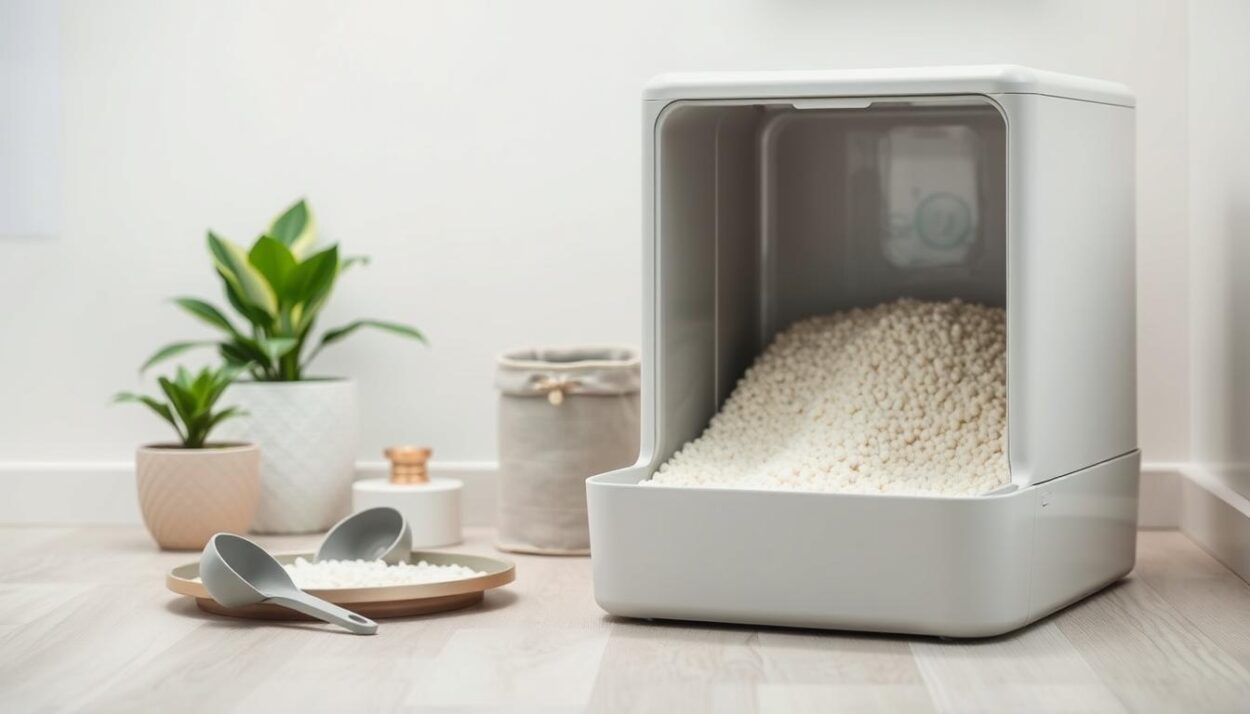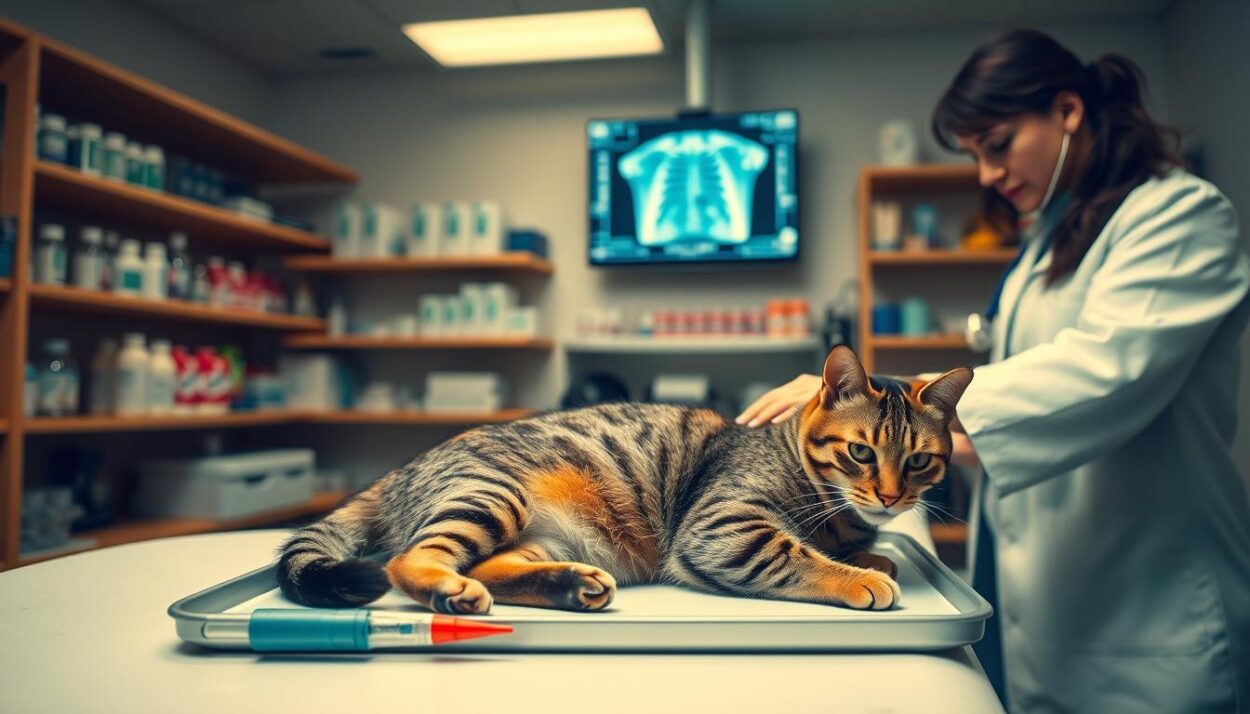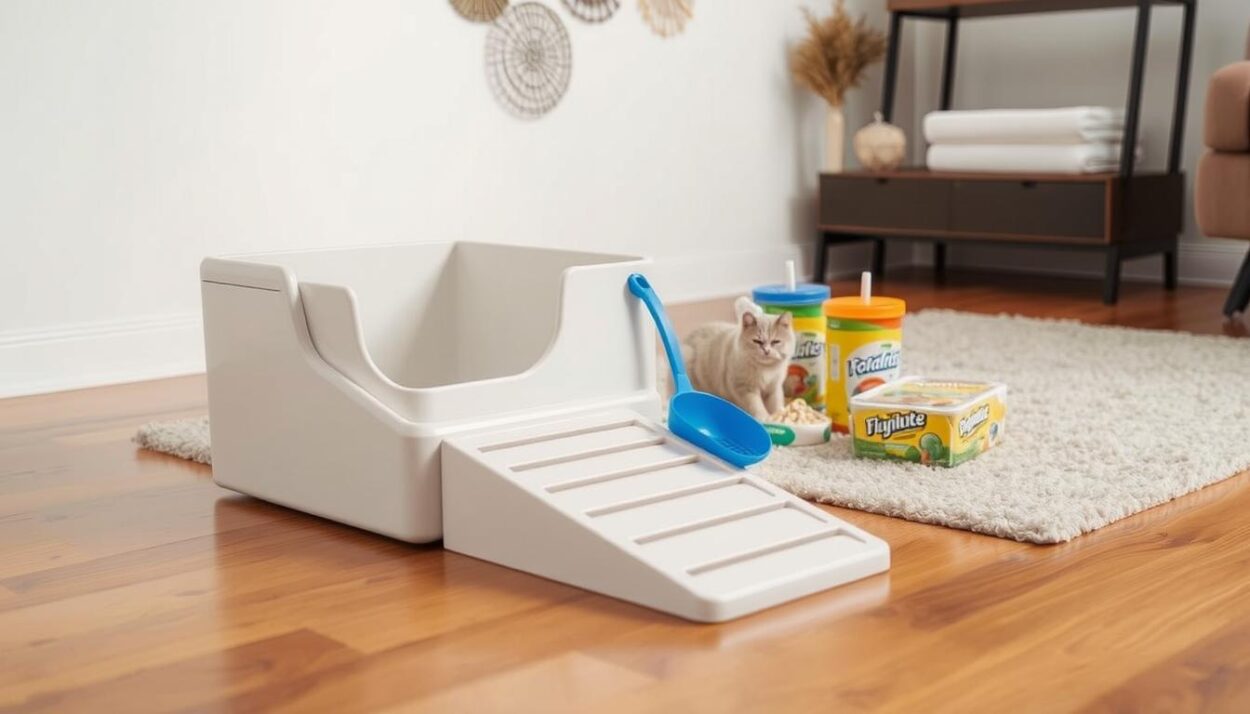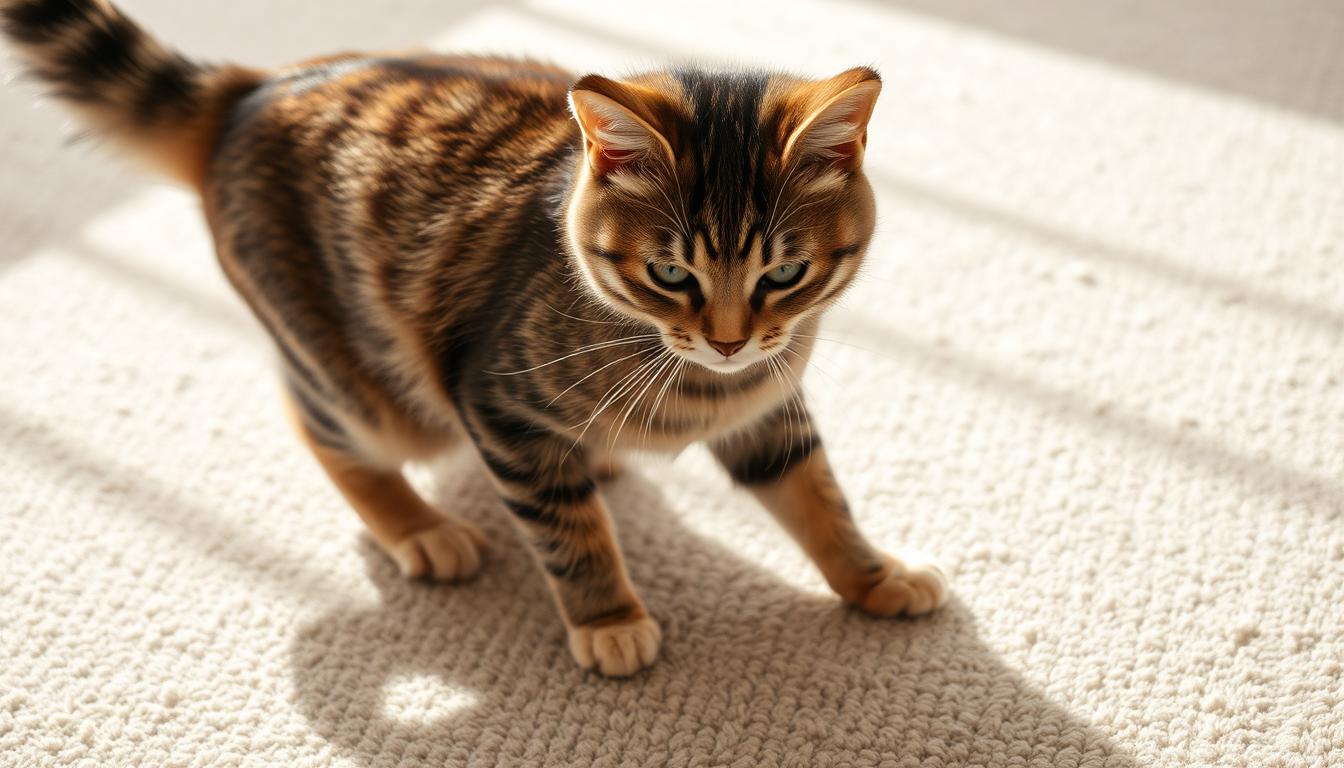Sarah, a homeowner in Austin, first noticed the sharp odor of ammonia lingering near her living room sofa. After days of searching, she discovered damp spots on the carpet—unmistakable signs of feline urination. Her frustration grew as cleaning sprays failed to resolve the issue. Like many pet owners, she initially blamed her cat’s behavior on spite. But experts emphasize that such actions often signal deeper concerns.
Inappropriate elimination—a term veterinarians use for urination outside the litter box—affects roughly 10% of domestic cats. Research shows this behavior stems from two primary causes: medical conditions like urinary tract infections or stress-driven habits such as territorial marking. Recognizing patterns in urine placement, frequency, or scent can help owners distinguish between health emergencies and behavioral communication.
Misinterpretations of marking, where cats deposit small amounts of liquid to claim territory, often escalate conflicts between pets and owners. This guide combines veterinary insights and animal behavior studies to decode why cats avoid their litter boxes and how to address root causes effectively. Subsequent sections will explore diagnostic steps, environmental adjustments, and proven deterrent strategies.
Key Takeaways
- Inappropriate urination often signals medical issues or stress-related behavior in felines.
- Territorial marking involves small urine deposits and differs from full-bladder elimination.
- Urine odor and location provide critical clues for identifying underlying causes.
- Consulting a veterinarian rules out infections, diabetes, or kidney disease first.
- Environmental stressors like new pets or routine changes can trigger marking.
- Solutions range from litter box modifications to pheromone diffusers.
Understanding Cat Urination Behavior
Approximately 23% of felines develop urinary issues requiring veterinary intervention, according to a 2023 Journal of Feline Medicine study. Biological factors and environmental stressors often intersect, creating complex elimination patterns that challenge pet owners.
Medical Causes of Inappropriate Elimination
Urinary tract disorders account for 55% of sudden elimination changes in domestic animals. Conditions like bladder stones create painful urination, leading felines to associate litter boxes with discomfort. Diabetes mellitus alters hydration cycles, increasing urination frequency beyond typical box usage patterns.
Research shows 68% of animals with untreated UTIs develop avoidance behaviors. “Painful voiding creates negative reinforcement loops,” notes Dr. Ellen Thompson of Cornell’s Veterinary College. Kidney dysfunction similarly disrupts waste filtration, causing unpredictable elimination urges.
Behavioral Triggers and Stress Responses
Environmental changes trigger 40% of non-medical elimination cases. New pets, relocated furniture, or altered feeding schedules can activate territorial marking instincts. Pheromonal communication through urine deposits serves as both stress response and spatial claim.
A 2022 Animal Behavior Society paper found scent marking increases 300% during household disruptions. Unlike medical-related urination, stress-induced deposits typically occur in small quantities near doors or windows. Owners observing these patterns should consider both health evaluations and environmental audits.
Common Litter Box Challenges
Over 34% of feline elimination issues stem from improper litter box setups, per a 2023 Journal of Applied Animal Welfare Science study. Poor maintenance, inadequate sizing, or disruptive placement often trigger avoidance behaviors. Addressing these factors requires understanding species-specific preferences and household dynamics.

Litter Box Preferences, Location, and Size
Felines favor boxes 1.5 times their body length for comfortable maneuvering. Senior animals or those with mobility issues particularly benefit from low-entry designs. A 2022 ASPCA survey found 78% of households improved elimination habits after upgrading to larger containers.
| Box Size | Recommended For | Placement Tips |
|---|---|---|
| 18″ x 14″ | Single adult | Quiet corner, away from appliances |
| 22″ x 18″ | Multi-cat homes | Separate floors, visible escape routes |
| 24″ x 20″ | Senior felines | Near resting areas, no lid |
Cleaning Techniques and Maintenance Routines
Daily scooping removes 90% of odor-causing bacteria, while weekly washing with unscented soap prevents chemical aversion.
“Many owners underestimate how scent sensitivity affects litter use,”
states Dr. Rachel Kim, veterinary behaviorist at UC Davis. Unscented clumping varieties receive 42% higher acceptance rates in controlled trials compared to perfumed alternatives.
Multi-pet homes should maintain one extra box per animal to reduce territorial disputes. For persistent issues, rotating cleaning schedules with enzymatic sprays proves 68% effective in reintroducing proper habits, according to Humane Society protocols.
Addressing “cat peeing inside the house” Issues
Spraying accounts for 60% of marking incidents in multi-pet households, per 2022 Veterinary Behavior research. Unlike full-bladder urination, this territorial behavior involves distinct physical cues and strategic placement patterns. Correct identification guides effective intervention strategies.
Distinguishing Between Spraying and Urination
Posture differences reveal intent: squatting indicates standard elimination, while upright stances with tail quivering signal marking. Sprayed deposits typically measure 2-5 mL versus 20-30 mL for bladder releases. Vertical surfaces like walls receive 78% of territorial claims, per University of Pennsylvania feline studies.
| Behavior | Posture | Volume | Location |
|---|---|---|---|
| Spraying | Standing, tail vertical | Small droplets | Doorways/windows |
| Full urination | Squatting position | Large puddles | Horizontal surfaces |
“Owners often misinterpret spraying as rebellion rather than communication,” notes Dr. Lisa Wong, board-certified animal behaviorist. “Horizontal urination outside litter areas warrants immediate medical screening.”
Identifying Behavioral Versus Medical Problems
Stress-induced marking frequently accompanies new pets or schedule changes. Animals urinating outside designated areas may show concurrent symptoms like excessive licking or appetite shifts. A 2023 Tufts University analysis found 89% of cases with blood-tinged urine had diagnosable infections.
Environmental preferences play key roles – 42% of felines avoid covered boxes according to ASPCA trials. Strategic placement of additional litter stations reduces marking by 67% when combined with enzymatic cleaners. Veterinary consultation remains critical to rule out diabetes or kidney dysfunction before implementing behavioral plans.
Exploring Underlying Health Concerns
A 2024 Veterinary Medicine Today analysis revealed that 31% of sudden elimination changes stem from undiagnosed metabolic conditions. Chronic illnesses like diabetes mellitus and urinary obstructions often manifest through altered bathroom habits before showing overt physical symptoms.

Urinary Tract Disorders and Diabetes
Diabetic animals produce excess urine due to impaired glucose processing, leading to frequent accidents. Urinary tract infections create painful inflammation, causing avoidance of litter areas. Left untreated, these conditions can progress to kidney damage or neurological issues.
| Condition | Key Symptoms | Diagnostic Tests |
|---|---|---|
| Diabetes | Increased thirst, weight loss | Blood glucose curve, urinalysis |
| UTI | Straining, bloody urine | Urine culture, ultrasound |
When to Seek Veterinary Advice
Persistent changes in elimination frequency or posture warrant professional evaluation. “Minor symptoms often work synergistically,” explains Dr. Amanda Pierce of the AVMA. “A thirsty animal with joint pain might avoid high-sided boxes, mimicking behavioral issues.”
Veterinarians recommend immediate consultation for:
- Blood-tinged urine
- Concurrent vomiting or lethargy
- Sudden weight fluctuations
“Early intervention prevents 82% of chronic cases from developing permanent organ damage,”
Modifying the Home Environment for Success
A 2023 Journal of Veterinary Behavior study found 74% of animals showed reduced stress behaviors after environmental modifications. Strategic adjustments to living spaces address territorial needs while promoting consistent elimination habits.
Creating a Cat-Friendly, Low-Stress Area
Designated quiet zones with elevated perches reduce anxiety in territorial animals. Vertical spaces like wall shelves or cat trees allow safe observation points, fulfilling natural instincts. Place litter stations away from noisy appliances and high-traffic areas.
Households should keep feeding stations separate from elimination areas to prevent resource guarding. Covered beds or enclosed furniture provide retreats during disruptions.
“Consistent access to private spaces lowers cortisol levels by 38%,”
states a 2022 University of Illinois animal stress study.
Utilizing Pheromones and Enrichment Tools
Synthetic pheromone diffusers mimicking facial markers reduced marking incidents by 63% in multi-pet homes. Brands like Feliway® create calming signals through odorless airborne compounds. Interactive feeders and puzzle toys divert energy from stress-related behaviors.
Daily play sessions using feather wands or laser pointers fulfill hunting drives. Window perches with outdoor views may also decrease boredom-induced spraying. Rotate enrichment items weekly to maintain engagement without overwhelming sensitive animals.
Implementing Effective Behavioral Fixes
Behavioral interventions resolve 72% of elimination issues when combined with medical clearance, per 2023 Applied Animal Behavior Science findings. Strategic adjustments to litter management and environmental interactions create lasting habit changes while addressing root stressors.

Litter Configuration Adjustments
Optimal setups require testing multiple variables. Research shows 68% of animals prefer unscented clumping varieties over perfumed alternatives. Place boxes in low-traffic zones with multiple escape routes, avoiding enclosed spaces that trap odors.
| Litter Type | Acceptance Rate | Best For |
|---|---|---|
| Silica crystals | 41% | Odor control |
| Recycled paper | 55% | Sensitive paws |
| Clay clumping | 83% | Natural digging instinct |
Automated self-cleaning units reduce aversion by 39% through immediate waste removal. Multi-cat homes should maintain one extra station per animal, positioned on separate floors for territorial harmony.
Reinforcement and Routine Optimization
Immediate rewards strengthen desired behaviors. Offer high-value treats within 3 seconds of successful box usage. Interactive play sessions after elimination create positive associations with designated areas.
“Consistency in cleaning schedules proves more effective than punishment,”
Stress reduction techniques like pheromone diffusers decrease marking incidents by 58% when paired with enrichment tools. Monitor progress through a behavior log tracking frequency, locations, and environmental triggers for targeted adjustments.
Conclusion
Resolving elimination challenges requires understanding the dual nature of potential triggers. Medical conditions like urinary tract infections and behavioral responses to environmental stressors account for most cases, as demonstrated by 2023 Journal of Feline Medicine research. Proper litter box configuration remains critical – 78% of households saw improvement after optimizing size, placement, and cleaning routines.
Veterinary consultation proves essential when observing altered urine patterns or physical symptoms. Blood-tinged deposits or frequent accidents often signal underlying health issues needing prompt attention. For stress-related marking, strategic home modifications like pheromone diffusers reduced incidents by 63% in controlled ASPCA trials.
Key steps include:
- Testing different litter types (clay varieties show 83% acceptance rates)
- Maintaining multiple stations in quiet locations
- Tracking behavioral changes through structured logs
Owners should differentiate territorial communication from medical emergencies. Vertical surface deposits typically indicate marking, while horizontal puddles suggest elimination issues. Consistent routines and environmental audits create lasting solutions, fostering harmony between felines and their caregivers.














